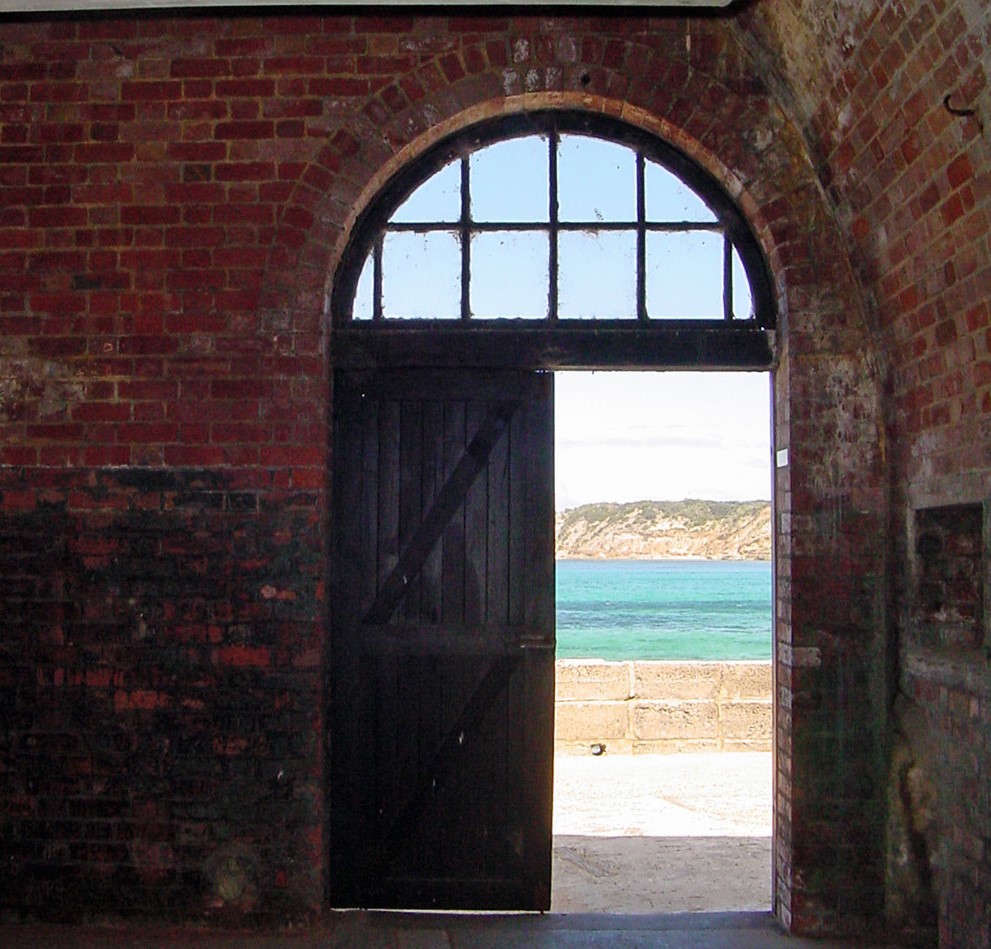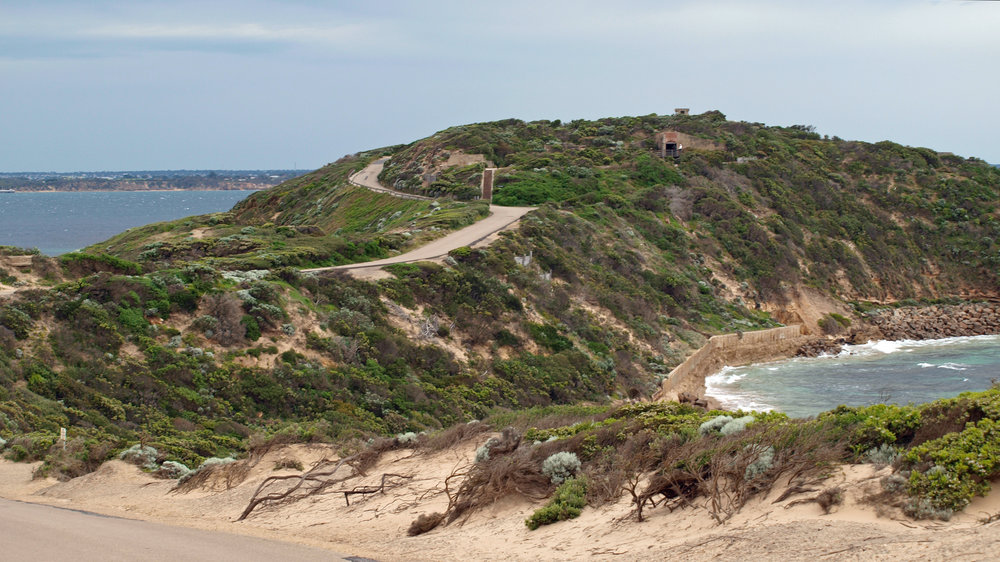A strong wind filled my senses as I stepped out of the car opposite the Quarantine Centre at Point Nepean National Park. It whipped at my friend, Alex, and I as we walked along and rustled through the knotted wall of tea trees and shrubs that bordered both sides of the road. Above us, the wind cut through the power lines, making a low eerie whistle, which seemed to suit the dark, brooding sky.
Point Nepean National Park is 90 km from Melbourne, but at only a few minutes’ drive from Sorrento on the Mornington Peninsula, it is a popular tourist destination. The walk from the Quarantine Centre, a historic medical facility that played a role during the worldwide Spanish Flu pandemic, to the end of the point is a 3.8 km round trip, and while the road is well-maintained, there are a few hills along the way. A year ago, when I was battling a back injury, those hills would have caused me some difficulty. But a shuttle bus runs from the car park at Quarantine Station to Fort Nepean at the end of the Peninsula twice an hour from 10:30am to 3:30pm, making this an ideal walk for families with young children, or friends and relatives who may tire easily.
I remember wondering what the point of this hilly road walk was when I was first here as a teenager during a sweltering summer’s day, until we reached the area where the trees and bushes were stunted – managing only to reach hip height at best in the exposed coastal conditions. Here, the land narrowed to reveal panoramic views of the white-capped ocean waves of Bass Strait to the right, and serene bay waters to the left.
Sometimes dolphins visit the bayside coves; I had seen their fin tips trailing through the water near the untouched beaches. And at dusk we’d seen grazing wallabies in grassy clearings. Everyone who spoke of this walk always mentioned seeing echidnas, but they seemed to have eluded me on every visit so far. I wondered if the wild weather now would mean there would be less wildlife to see.

This was the first time I’d been to Point Nepean while so many plants were in bloom. The white flowers of the tea trees filled the air with a rich, honey scent, so thick even the persistent wind couldn’t fully disperse it. Delicate, deep purple pea flowers bobbed on their scattered green shoots, hugging the ground beneath the tea and melaleuca trees. The air around the plants was alive with activity, with bee-mimicking hoverflies loitering in bunches and butterflies performing spiral dances around each other, unperturbed by the moving air. Honeyeaters and small, cryptic birds darted in and out of the foliage.
Along the way we passed several walking tracks that branched off to the tops of hills and lookout points along the coast, including the memorial to Australia’s former Prime Minister Harold Holt, who disappeared one morning along this coastline. We also passed foreboding warning signs about unexploded ordnance off the paths, a reminder of dark times when forceful defence of Port Phillip Bay was deemed necessary. Now it seemed as if this military history helped protect the wild things that live here by enhancing the park’s draw to tourists, but keeping us from straying from the pathways. The old fort and associated buildings with their cold concrete walls and low ceilinged tunnels were unsettlingly claustrophobic compared to the wild, open spaces of their location.
Tourists passed us, in pairs or noisy groups, as we stopped to examine the insects along the road. As we approached the narrowest part of the point, a young girl shouted gleefully as she raced into the wind, her arms out like an aeroplane. But when she left with the rest of her family trailing after her, we were alone at the end of the Peninsula; the final bus for the day had gone and the overcast sky grew darker.
We rested on a wooden bench, below the old concrete fort, at the edge of the land, watching the wave-surfing gannets fly in from the ocean to join the terns resting on the exposed rocky shelf of Nepean Reef, in the mouth of the bay. After my experience with injury last year, it was a relief to be able to access such wild views again. The bay looked wilder than the ocean today, with the north wind tossing up the waves. There, across the water, we could see Queenscliff, the lighthouse at Point Lonsdale, and the jagged Australian coastline extending southwest, hazy behind distant rain.

Soon after we turned back, Alex abruptly stopped and pointed towards the low scraggly shrubs near where the land dropped towards the ocean. There, snuffling along the base of the shrubs in the sandy soil, was an echidna! As we stood and watched its distinctive shape waddle in and out of view, a bird plummeted past at a staggering speed. We watched the diminutive raptor, a nankeen kestrel, hover; a shrinking speck climbing into the sky, as we made our way back towards the Quarantine Centre, reaching the carpark just in time for the rain to tumble down.
Banner image courtesy of Tessa Koumoundouros.


Leave a Reply